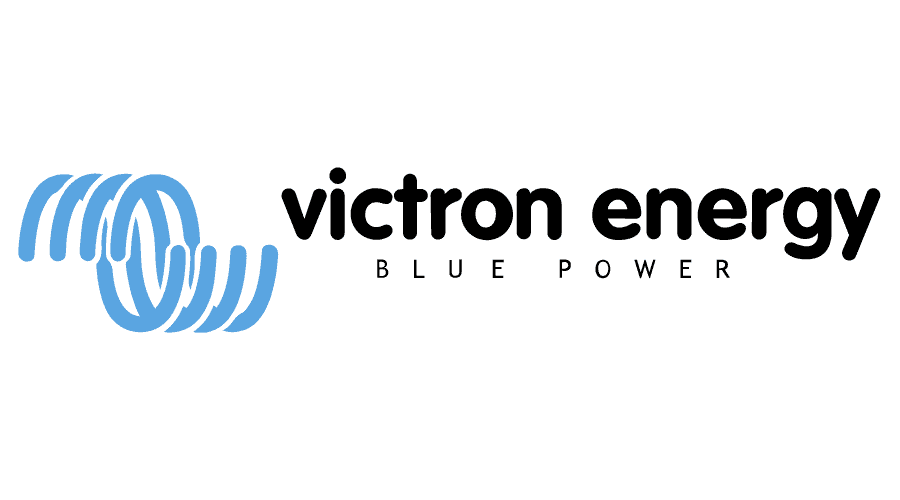BRANDS WE INSTALL. CALL OUR FRIENDLY EXPERTS NOW ON 1300 201 358




Free
RV installation quote
For customers with Recreational Vehicles
Our highly trained team can provide you with professional advise so that you can choose the right system to install in your Recreational Vehicle.
What is a RV OFF GRID system?

RV Battery types
The wet-cell, lead-acid deep-cycle battery is the cheapest but not ideal: it vents gas to the atmosphere, so it must be kept upright and in a well-ventilated area and needs topping up with distilled water. It can’t charge up as quickly as other deep-cycle batteries either.
Better than the wet-cell is the Absorbed Glass Mat (AGM) battery. The AGM is also a lead acid battery, but it has fibreglass matting to absorb its electrolyte and does not vent gas to the atmosphere unless overcharging. AGMs have much lower resistance than wet-cell batteries so they charge more quickly and perform better when under heavy load.
Next up the chain is the Gel lead-acid battery, which suspends electrolyte in a gel paste. The gel battery doesn’t vent to the atmosphere and if you do flatten it, it’ll handle it better than any other lead-acid battery. This type can only take a relatively low rate of charge.
However, the best (and most expensive) battery is the lithium battery. Unlike other batteries, lithium batteries will give the peak power required and maintain constant voltage regardless of the load. In practice that voltage is likely to be up to about 13 volts.
With enough inverter capacity, just about all RV electrical appliances can be run simultaneously (if required), including high-current draw equipment such as 240 volt air conditioners.
You can also pump in more power more quickly with lithium and they can last as much as four times longer than an AGM and lithium will easily cope with a drop to 20 per cent state of charge. Lithium doesn’t cope too well with being run to zero SOC – cells can reverse their polarity and might not be able to be fixed.
Another option – which will be cheaper – is to use AGM batteries and a generator as required.
If you need more charge than one battery can hold, you can run up to four AGM batteries and hook them up in parallel. This’ll give you their combined amperage output, while still remaining at 12 volts. Make sure the wiring is not any longer than necessary and has a thick enough core to do the job.
Inverter options
To run 240-volt AC gear you need an inverter, which changes 12 volt DC input to 240 volt output.
There are a few different inverter types — square wave, modified sine wave and pure sine wave. Pure sine wave inverters are the go because they smooth out any voltage spikes and so can run sensitive electrical gear like laptops without damaging them.
House batteries are also going to need to be charged up. At the most basic level, a 240v to 12v charger is the way to go. For a 100 amp hour battery, you’ll need a 25 amp charger; for more than 200 amp hour, go for a 40 amp charger. Each type of battery (eg AGM or lithium) needs a specific charger type, which must be wired up as close as possible to the house batteries to avoid voltage drop.
Such a charger requires that you have 240v mains power or a generator handy.
Another option is using your tow vehicle’s alternator, wired through to the RV house battery. However, it’s not aways so simple: most vehicles have a ‘smart’ alternator, which allows the vehicle to control the output voltage from the alternator based on vehicle operating conditions to reduce electrical load. This type of alternator doesn’t do a great job of charging a house battery.
To get around this, you’ll need a DC to DC charger. A good DC to DC charger will fool the smart alternator into thinking that the battery is a fixed current draw accessory, and so be able to charge it up.
As for wiring, you need to run a minimum of 6mm wires and use a 50 amp Anderson plug to connect the wires at the towbar. If you don’t, you’ll have too much voltage drop.
You’ll need an inline fuse or a reset breaker switch and it’s a good idea to fit a relay so that the plug is only powered when the vehicle is switched on. That’s so if you leave the caravan accessories like a fridge on and forget to unplug the vehicle overnight, for example, you won’t run the vehicle battery flat.

